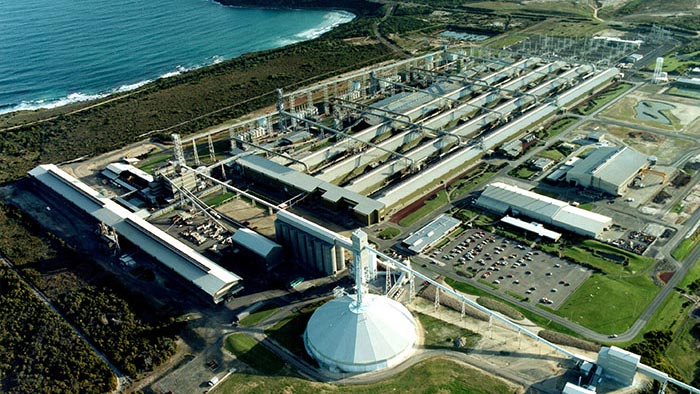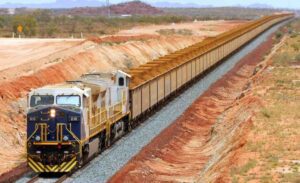Portland is still a long way off becoming a booming renewable methanol facility, but the idea has been pushed a little further ahead after the Victoria government kicked in $500,000 towards a feasibility study.
HAMR Energy wants to set up Portland as its flagship renewable methanol facility in Victoria which will feed a proposed bunkering and storage hub at the Port of Melbourne.
At an anticipated 200,000 tonnes of green methanol a year, HAMR says its project will cost $700-950 million.
The feasibility study for Portland is around setting up a plant that can convert plantation forestry residue, such as trimmed branches and damaged timber, into green methanol, and includes a 100 megawatt (MW) hydrogen electrolyser.
The company says it will produce synthetic gas from the tree residues, add in green hydrogen, and then react the combined gas over a catalyst to make methanol.
Portland is a deep water port that harbours 300 vessels and about 5 million tonnes of forestry products each year. It is also next door to Alcoa’s aluminium smelter.
In May, the Port of Melbourne, Maersk, ANL, Svitzer, Stolthaven Terminals, HAMR Energy and ABEL Energy signed a memorandum of understanding to look into the commercial feasibility of establishing a green methanol bunkering hub at the port.
Green methanol the next big thing in biofuel
HAMR Energy’s goal is to be producing by 2027 and be producing 1 million tonnes of green methanol by 2030.
It is one of about 80 renewable methanol projects under development, according to data from credit ratings agency S&P.
Currently the largest proposed green methanol plant is in Chile, a Siemens, Porsche and HIF project that claims it will launch with nameplate production of 1.3 million tonnes per annum in 2027.
The largest existing project is by Enerkem in Rotterdam, which started producing 270,000 tonnes annually in 2021.
In Australia, ABEL Energy and Thyssenkrupp are aiming to have a green methanol plant open in 2025 in the Tasmanian industrial hub at Bell Bay, costing an estimated $1.3 million for the feasibility study and $1.2 billion all up, according to CSIRO estimates.
Demand is up, but not supply yet
With biofuels potentially headed towards a feedstock shortage, according to the International Energy Agency (IEA), there is plenty of blue sky for alternate fuels and especially in the maritime industry which is looking at the fuel as one way to cut emissions.
“Methanol bunkering continues to garner support from major shipping companies as they see it as a viable fuel option over LNG amid steady prices and an expected ramp-up in biomethanol and e-methanol facilities worldwide,” wrote S&P analysts Kamna Kapoor and Stergios Zacharakis in April.
“Methanex, the world’s largest methanol producer, estimated that global methanol demand was approximately 88 million mt in 2022 and is expected to grow at a CAGR of approximately 3 per cent or more than 14 million mt over the next five years.”
International shipping creates about 2 per cent of global emissions. HAMR says some 100 ports around the world, including in Australia, are already bunkering – supplying fuel for use in ships – methanol.
Yet getting hold of green methanol is tricky. The Methanol Institute estimates about 1 per cent all methanol produce is green but expects 8 million tonnes per annum to be rolling out of factory doors by 2027.
HAMR is anticipating a market for the green version of methanol to be in the realm of 380 million tonnes annually by 2050.










